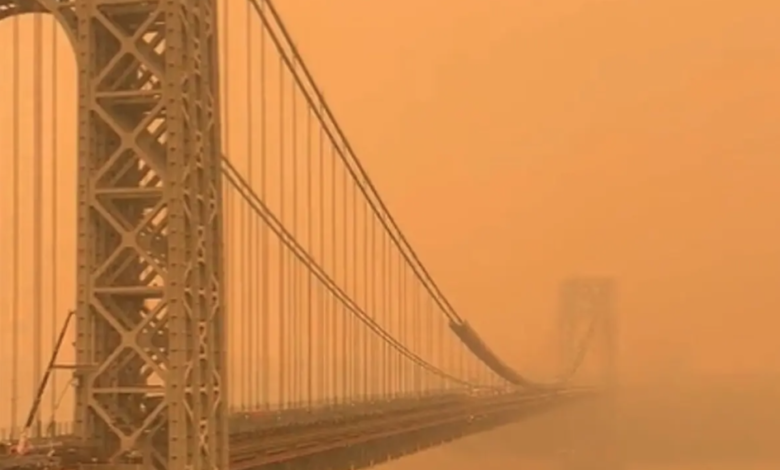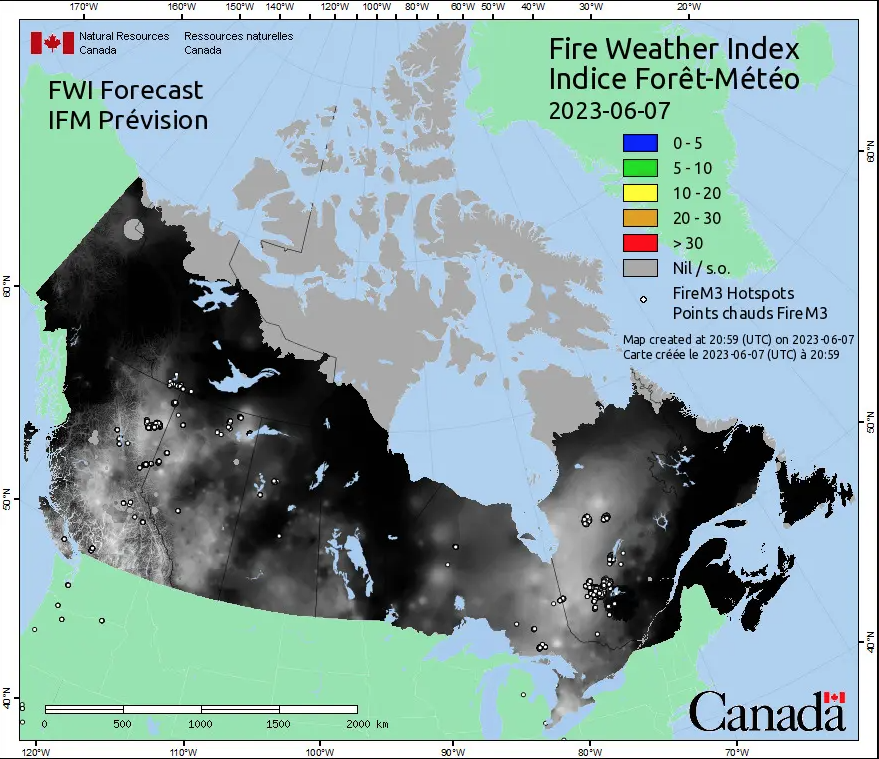Wildfires in Canada, climate crisis suffocates North America

To date there are over 400 active fires of which more than 230 completely out of control
(sustainabilityenvironment.com) – Red alert throughout the east coast of the United States, are 75 million people at risk for the smoke-laden air. Smoke that held down planes at New York airports yesterday. The skyscrapers of the Big Apple could be seen blurred against an orange sky. The level of PM2.5 is 15 times higher than the safety threshold established by the WHO. The affected area is thousands of km2 large. These are the first large-scale consequences of the hundreds of wildfires in Canada, which intensified in early June. Canada is home to 9% of the world’s forests.
Canada Worst’s fire season ever
The one that is being consumed in these weeks has all the numbers to soon become the worst season of wildfires in Canada ever. The start was in March and in these three months the fires hit all the Canadian provinces with the exclusion of Nunavut and Prince Edward Island.

To date, 8 June, 414 fires are active throughout the country, of which more than half, 239, are classified as “out of control”. In Quebec alone, in the eastern part of the country, there are 160 pyres. Air has also become unbreathable in other parts of the United States, including Idaho, Montana, and Colorado, as a result of burning on the Canadian west coast. By the beginning of this week, the pyres had destroyed 3.3 million hectares of land, 13 times the average for the last 10 years. Over 120,000 people have been displaced.
The role of the climate crisis
“The distribution of fires from coast to coast this year is unusual. At this time of year, fires usually occur only on one side of the country, most often to the west,” said Michael Norton, a Canadian Ministry of Natural Resources official. The causes? In part, the season of wildfires in Canada is fueled by the impact of the climate crisis.
In recent months the multiplication of pyres, especially on the Pacific side, also occurred due to an unusual lack of rain that made land and forests drier. The boom of wildfires in recent days, however, seems to be due to the exceptionally high temperatures that have characterized Canada for almost all of May, with thermal anomalies of even +8,000 compared to the historical average. The combination of these two factors also increases the number of lightning strikes, which can act as a trigger for fires.
Read also The new IPCC Synthesis Report: we are still in time to slow down the climate crisis
As in many other climate disasters, we are tempted to use the adjective “exceptional” for wildfires in Canada. Actually it’s not. If we look at the past, the current situation is completely off the scale. But if we look to the future, the predictions of the IPCC and the major UN agencies say that this is, more or less, the new normal for the 21st century. A study by UNEP last year stated that fires around the world should grow 57% by the end of the century.





